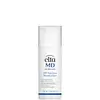What's inside
What's inside
 Key Ingredients
Key Ingredients

 Benefits
Benefits

 Concerns
Concerns

 Ingredients Side-by-side
Ingredients Side-by-side

Water
Skin ConditioningEthylhexyl Isononanoate
EmollientNiacinamide
SmoothingGlyceryl Stearate
EmollientPEG-100 Stearate
Glycerin
HumectantHydroxyethyl Acrylate/Sodium Acryloyldimethyl Taurate Copolymer
Emulsion StabilisingC10-30 Cholesterol/Lanosterol Esters
EmulsifyingGlycereth-26
HumectantPhenoxyethanol
PreservativeLinoleic Acid
CleansingHydroxypropyl Bispalmitamide Mea
EmollientPotassium Cetyl Phosphate
EmulsifyingXanthan Gum
EmulsifyingTocopheryl Acetate
AntioxidantHydrolyzed Caesalpinia Spinosa Gum
AbsorbentOleth-3 Phosphate
Oleic Acid
EmollientEthylhexylglycerin
Skin ConditioningCaesalpinia Spinosa Gum
Skin ConditioningPolysorbate 60
EmulsifyingSorbitan Isostearate
EmulsifyingHydrolyzed Rice Protein
Skin ConditioningDisodium EDTA
Thioctic Acid
AntioxidantSodium Hyaluronate
HumectantPalmitic Acid
EmollientStearic Acid
CleansingSodium Bisulfite
AntioxidantPotassium Sorbate
PreservativeSodium Benzoate
MaskingPhosphoric Acid
BufferingTetrasodium EDTA
Water, Ethylhexyl Isononanoate, Niacinamide, Glyceryl Stearate, PEG-100 Stearate, Glycerin, Hydroxyethyl Acrylate/Sodium Acryloyldimethyl Taurate Copolymer, C10-30 Cholesterol/Lanosterol Esters, Glycereth-26, Phenoxyethanol, Linoleic Acid, Hydroxypropyl Bispalmitamide Mea, Potassium Cetyl Phosphate, Xanthan Gum, Tocopheryl Acetate, Hydrolyzed Caesalpinia Spinosa Gum, Oleth-3 Phosphate, Oleic Acid, Ethylhexylglycerin, Caesalpinia Spinosa Gum, Polysorbate 60, Sorbitan Isostearate, Hydrolyzed Rice Protein, Disodium EDTA, Thioctic Acid, Sodium Hyaluronate, Palmitic Acid, Stearic Acid, Sodium Bisulfite, Potassium Sorbate, Sodium Benzoate, Phosphoric Acid, Tetrasodium EDTA
Water
Skin ConditioningDimethicone
EmollientHydrogenated Polyisobutene
EmollientGlycerin
HumectantCholesterol
EmollientC12-15 Alkyl Benzoate
AntimicrobialCeramide NP
Skin ConditioningHelianthus Annuus Seed Oil Unsaponifiables
EmollientBis-PEG-18 Methyl Ether Dimethyl Silane
EmollientSodium Polyacrylate
AbsorbentPEG-10 Dimethicone
Skin ConditioningNylon-12
Lauryl PEG-9 Polydimethylsiloxyethyl Dimethicone
Skin ConditioningDimethicone/PEG-10/15 Crosspolymer
Phenoxyethanol
PreservativeDisteardimonium Hectorite
StabilisingHydroxyethylpiperazine Ethane Sulfonic Acid
BufferingAmmonium Polyacryloyldimethyl Taurate
Emulsion StabilisingChlorphenesin
AntimicrobialCaprylyl Glycol
EmollientPEG/PPG-18/18 Dimethicone
EmulsifyingPropylene Carbonate
SolventDisodium EDTA
Acrylonitrile/Methyl Methacrylate/Vinylidene Chloride Copolymer
Adenosine
Skin ConditioningDipropylene Glycol
HumectantLavandula Angustifolia Oil
MaskingRosmarinus Officinalis Leaf Oil
MaskingT-Butyl Alcohol
PerfumingMentha Piperita Oil
MaskingSodium Citrate
BufferingLinalool
PerfumingIsobutane
Ceramide EOP
Skin ConditioningBHT
AntioxidantTocopherol
AntioxidantLimonene
PerfumingCeramide AP
Skin ConditioningWater, Dimethicone, Hydrogenated Polyisobutene, Glycerin, Cholesterol, C12-15 Alkyl Benzoate, Ceramide NP, Helianthus Annuus Seed Oil Unsaponifiables, Bis-PEG-18 Methyl Ether Dimethyl Silane, Sodium Polyacrylate, PEG-10 Dimethicone, Nylon-12, Lauryl PEG-9 Polydimethylsiloxyethyl Dimethicone, Dimethicone/PEG-10/15 Crosspolymer, Phenoxyethanol, Disteardimonium Hectorite, Hydroxyethylpiperazine Ethane Sulfonic Acid, Ammonium Polyacryloyldimethyl Taurate, Chlorphenesin, Caprylyl Glycol, PEG/PPG-18/18 Dimethicone, Propylene Carbonate, Disodium EDTA, Acrylonitrile/Methyl Methacrylate/Vinylidene Chloride Copolymer, Adenosine, Dipropylene Glycol, Lavandula Angustifolia Oil, Rosmarinus Officinalis Leaf Oil, T-Butyl Alcohol, Mentha Piperita Oil, Sodium Citrate, Linalool, Isobutane, Ceramide EOP, BHT, Tocopherol, Limonene, Ceramide AP
 Reviews
Reviews

Ingredients Explained
These ingredients are found in both products.
Ingredients higher up in an ingredient list are typically present in a larger amount.
Disodium EDTA plays a role in making products more stable by aiding other preservatives.
It is a chelating agent, meaning it neutralizes metal ions that may be found in a product.
Disodium EDTA is a salt of edetic acid and is found to be safe in cosmetic ingredients.
Learn more about Disodium EDTAGlycerin is already naturally found in your skin. It helps moisturize and protect your skin.
A study from 2016 found glycerin to be more effective as a humectant than AHAs and hyaluronic acid.
As a humectant, it helps the skin stay hydrated by pulling moisture to your skin. The low molecular weight of glycerin allows it to pull moisture into the deeper layers of your skin.
Hydrated skin improves your skin barrier; Your skin barrier helps protect against irritants and bacteria.
Glycerin has also been found to have antimicrobial and antiviral properties. Due to these properties, glycerin is often used in wound and burn treatments.
In cosmetics, glycerin is usually derived from plants such as soybean or palm. However, it can also be sourced from animals, such as tallow or animal fat.
This ingredient is organic, colorless, odorless, and non-toxic.
Glycerin is the name for this ingredient in American English. British English uses Glycerol/Glycerine.
Learn more about GlycerinPhenoxyethanol is a preservative that has germicide, antimicrobial, and aromatic properties. Studies show that phenoxyethanol can prevent microbial growth. By itself, it has a scent that is similar to that of a rose.
It's often used in formulations along with Caprylyl Glycol to preserve the shelf life of products.
Water. It's the most common cosmetic ingredient of all. You'll usually see it at the top of ingredient lists, meaning that it makes up the largest part of the product.
So why is it so popular? Water most often acts as a solvent - this means that it helps dissolve other ingredients into the formulation.
You'll also recognize water as that liquid we all need to stay alive. If you see this, drink a glass of water. Stay hydrated!
Learn more about Water